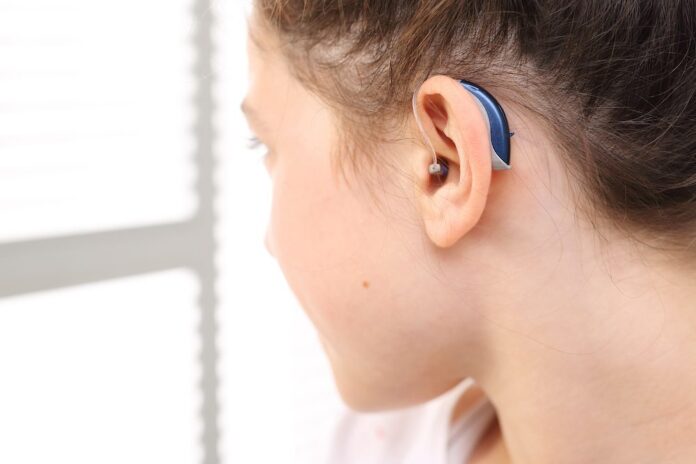Buying a hearing aid is an essential step for Americans with hearing loss to regain a healthy and happy life. These compact electronic devices give you back the ability to hear and understand outside sounds. They are, in fact, an investment in your health. Selecting and purchasing medical devices takes time and money. Every user wants to wear hearing aids for as long as possible, but such an approach is not always justified. There are situations when it is necessary to replace the device with a more recent model. Let’s take a look at this important issue for every hearing aid user together.
Do our needs change over time?
Hearing aid manufacturers are constantly improving their products, enhancing existing features, and adding new ones. Therefore, the question “How long will a hearing aid last?” is more accurately phrased as follows. How long will a hearing aid last to meet my needs?
Changes in your life circumstances may make it necessary to replace your hearing aids as well. If you used to work in a quiet office and now have moved to a noisy environment, you’ll need a hearing aid with a more effective noise-canceling feature. And if you’re using a 3-4-year-old model, it’s obvious that the newer model will have better, more powerful noise cancellation. Do not look at the service life set by the manufacturer, but objectively assess your needs at the current moment. Today, hearing aids have become more accessible to Americans. Hundreds of models are available in the hearing aid store that’ll suit all your wishes and requirements.
What functions of a hearing aid are important?
There are several reasons for replacing hearing aids with new models. First, there is a possibility that the device could break down (an obvious one). If a medical device is broken, it should be replaced with a working one. The second reason is the obsolescence of the model and the lack of necessary functions.
Today, the hearing aid industry is developing rapidly. Every year, manufacturers release new models with innovative features that make hearing aids more effective and comfortable. What features should be in every hearing aid today?
Directional microphones
The hearing aid’s directional microphone system allows you to focus on the sound source in front of you. Directional microphones help you better understand speech in noisy environments.
Noise reduction
Noise reduction analyzes the audio signals coming into your hearing aid and eliminates unwanted background noise that prevents you from focusing on important acoustic information. Its usefulness can be fully appreciated in the workplace when lively chatting between colleagues can disturb your conversation with a customer.
Feedback suppression
The so-called “acoustic feedback effect”, which manifested itself by a sharp irritating whistling, was the trouble with all older models of hearing aids. It was due to a certain design flaw, namely too close microphone positioning to the amplifier. However, in the vast majority of newer models, the problem has long been eliminated through design improvements and the presence of a corresponding function. It suppresses any hint of feedback.
Artificial Intelligence
An example of artificial intelligence in hearing aids is the automatic adjustment of their settings to the surrounding acoustic environment. In addition, it can better recognize the speech of a specific person. AI can also analyze the performance of the devices and help the user improve the overall experience.
Bluetooth compatibility
Today’s hearing aids support Bluetooth communication. They can receive sound signals from other Bluetooth devices, such as smartphones and tablets. Bluetooth increases comfort and provides a modern hearing aid experience.
When should I think about changing devices?
Hearing aids are an indispensable tool for people with hearing loss. They help to improve the quality of life, interaction, and communication with others. Like any device, hearing aids can malfunction or become obsolete over time. It makes many people wonder how often it is necessary to change hearing aids.
“Most hearing aids last three to seven years, but regular maintenance and repairs can extend their life.” – Dr. Cliff Olson, audiologist.
Manufacturers recommend changing hearing aids every three to five years. However, this time may vary depending on individual needs and conditions of use. For example, if you use your hearing aids daily in harsh environments, such as noisy factories or construction sites, they may wear out faster and require replacement after 2-3 years.
Pay attention to the condition of your hearing aid. If the device constantly breaks down or requires regular repairs, it may be a sign that it needs to be replaced.
Keep an eye on your hearing changes. If your hearing continues to deteriorate, your hearing aid may no longer be able to do its job. In such a case, you should contact your audiologist. A professional will help you choose a new hearing aid that meets your needs.
As written above, hearing aid technology is constantly evolving. Newer models can provide better sound, better noise protection, and greater ease of use. If you feel that your model has become outdated and does not meet your needs, it is another sign that it is time to replace your hearing aids.
In any case, if you notice deteriorating sound quality, battery problems, or other problems with your hearing aids, it is worth seeing a professional to evaluate the condition of your hearing aid and make a replacement if needed. Ultimately, the health and comfort of your ears should be a priority!









